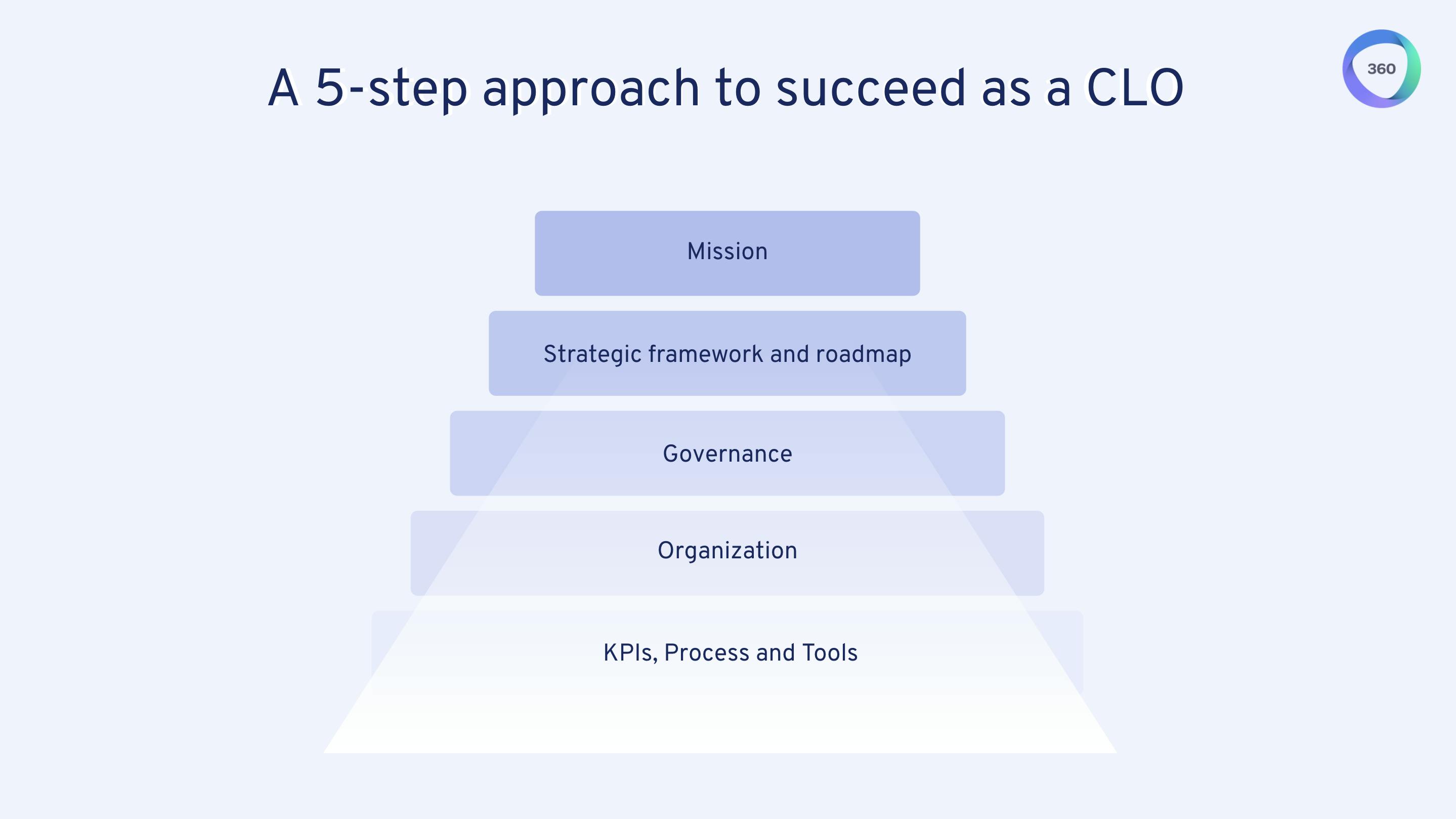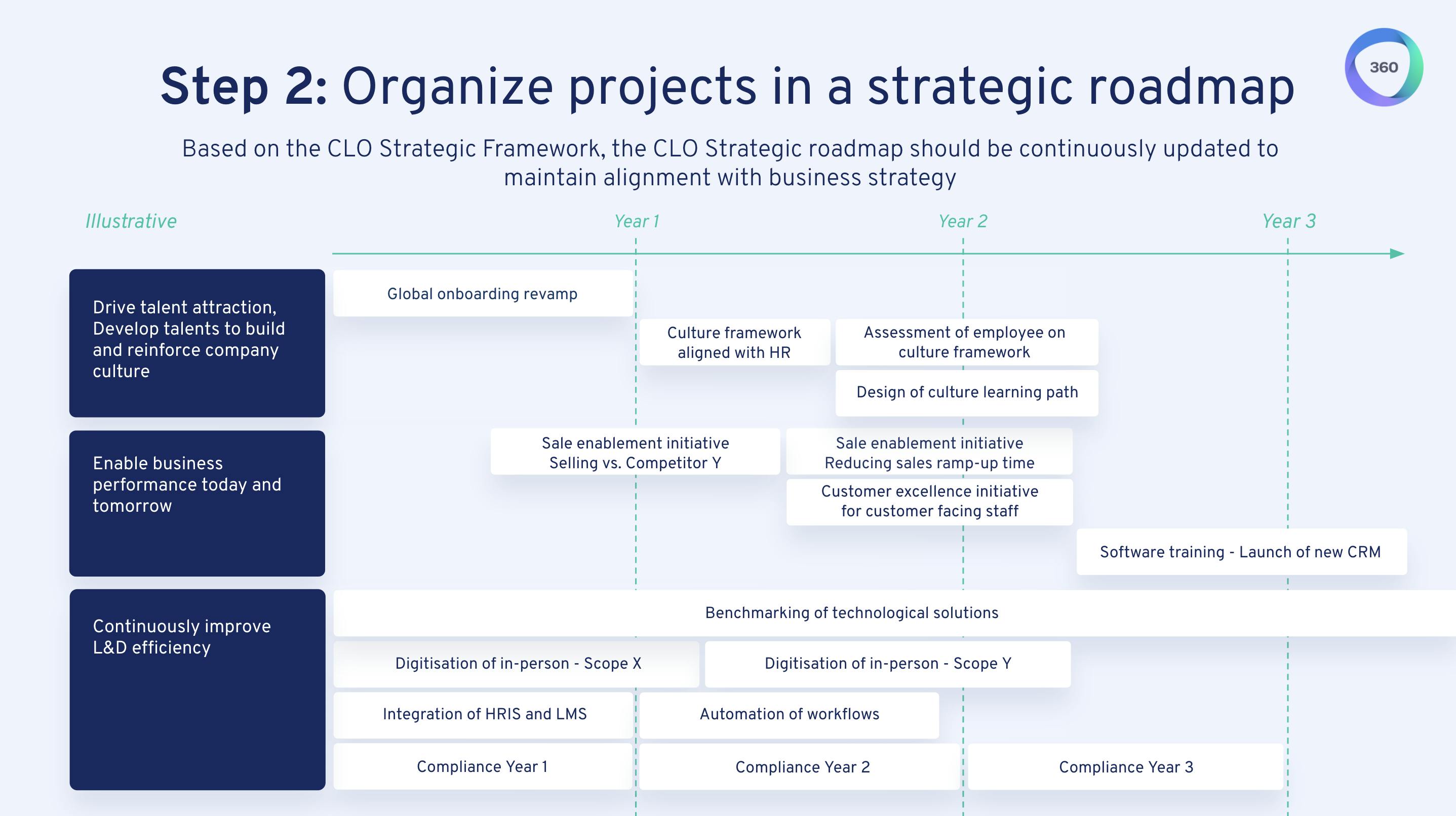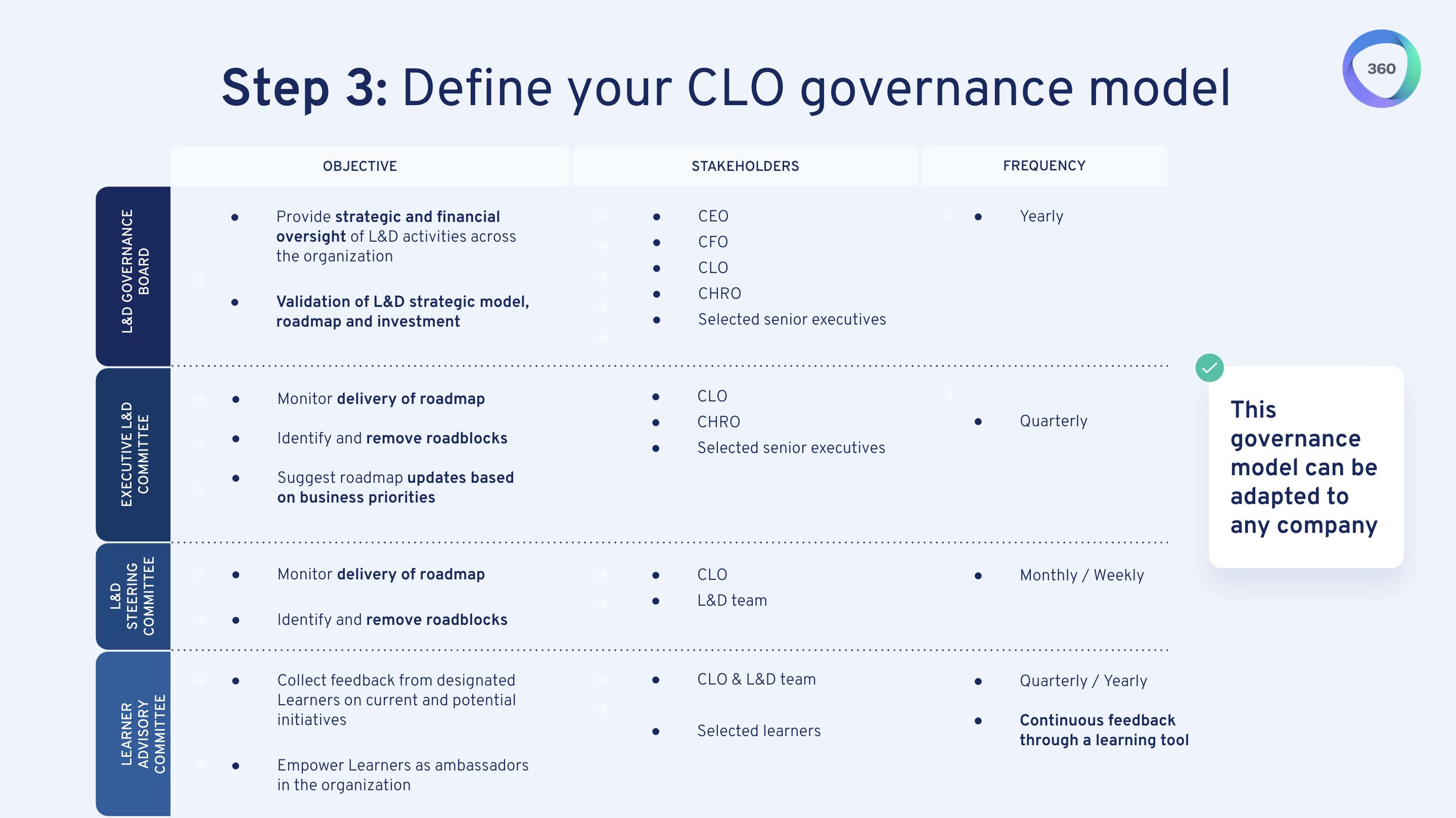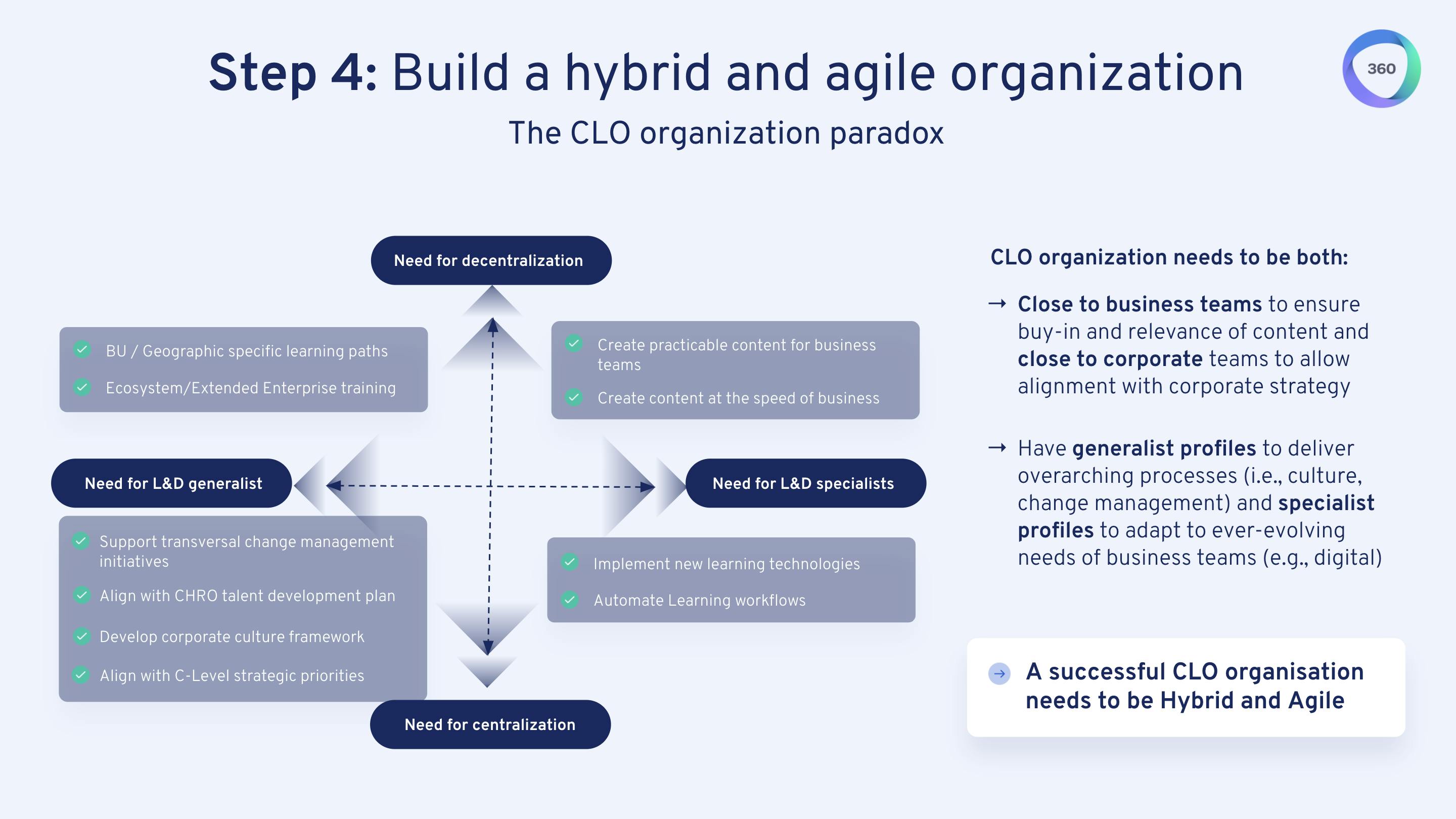Discover the learning platform powered by collaborative learning.
A 15-minute discussion with an expert
100% tailored to your needs - with ❤️
No commitment. Free as can be.
For too long, Learning and Development teams have been seen as extraneous. Nice to have, but not vital. Many companies view L&D as a service provider for employees instead of a strategic partner for growth.
But times are changing. Over 80% of CEOs polled by PriceWaterhouseCoopers see a gap in employee skills as a direct threat to their business. Organizations struggle to keep up with volatile world events, quickly-evolving business plans, and changes in the way employees work and learn.
This chasm is a massive problem for organizations. For visionary L&D leaders, it’s also an opportunity.
Many companies view L&D as a service provider for employees instead of a strategic partner for growth.
L&D teams can be so much more than supporting players in their company’s success. With the right leadership, L&D can play a pivotal role in organizational growth and business development. Robust employee training and development can help companies stay agile and competitive in a quickly changing technological landscape. It also plays a critical role in attracting and keeping the best talent.
All of this is only possible with buy-in from the leadership team. A strategic Chief Learning Officer can coordinate with leadership to make sure that L&D gets the resources and support it needs to enact real change. To earn that seat in the C-suite, L&D leaders need to develop a long-term plan to coordinate their department with larger company goals and initiatives.
Whether you’re already a CLO or you aspire to be one, we’ve put together a solid plan to help you evolve your L&D department from a supporting player to an essential partner in the growth of your organization.
But before we dive in, if you're eager for more success stories, you can also check out our expert insights series, in which we share top L&D advice from companies like Amazon, WhatsApp, and Klaviyo:

By providing your contact info, you agree to receive communications from 360Learning. You can opt-out at any time. For details, refer to our Privacy Policy.
A strategic Chief Learning Officer can coordinate with leadership to make sure that L&D gets the resources and support it needs to enact real change.
As the role of L&D becomes more critical to growing businesses, the job description of CLOs evolves from simple training managers to key players in shaping a more effective workforce.
A Chief Learning Officer, CLO for short, is a senior-level executive who oversees all learning and employee development programs within an organization. They create learning strategies, oversee their execution, and ensure that all educational programs align with larger company goals.
CLOs are also sometimes called Chief Knowledge Officers or Directors of Learning and Development. They typically report either to the head of HR or directly to the CEO.
The CLO is a relatively new position — it was first introduced to the public in 1994. As it continues to grow in popularity, the position is also evolving to meet the needs of growing companies.
To transform L&D into a key strategic partner, it’s not enough to simply oversee learning operations; you need to integrate them with the organization’s goals.
In early 2020, Harvard Business Review introduced the idea of a Transformer CLO. The Transformer CLO’s goal isn’t just to help employees learn specific skills; it’s to challenge their capabilities and create a growth mindset.
Similarly, the Strategic CLO is interested in more than just skill development. They want to ingrain learning and development into every aspect of the company. The Strategic CLO’s goal is to irrevocably tie L&D functions to a larger company strategy.
Studies show that most employee turnover is preventable and that one of the biggest reasons employees leave is a lack of suitable opportunities for growth and development. The Strategic CLO knows that L&D must be at the core of attracting, developing, and retaining the top talent needed to propel the company forward.
To facilitate that progress, Strategic CLOs must tackle the dual opportunity and challenge of digital transformation. Digitizing training is the key to scaling L&D and being a resource for workers even during unexpected events, like 2020’s global lockdowns. New learning methods and tools, like the rise of the Collaborative Learning Platform, revolutionize how organizations approach learning. The CLO plays a key role in vetting and rolling out new technology.
The Strategic CLO is interested in more than just skill development. They want to ingrain learning and development into every aspect of the company. The Strategic CLO’s goal is to irrevocably tie L&D functions to a larger company strategy.
But embracing new technologies means challenging employees to learn yet another new tool. A platform is only useful if people know and want to use it. Digital transformation is not a panacea, and it falls upon the Strategic CLO to strategically implement new tools that enhance the learning experience without complicating it.
So how does one become a Strategic CLO? Begin by tackling the biggest roadblocks that stand in the way of L&D growth.
Many L&D teams find the same major challenges standing in the way of their ability to grow. To get executive buy-in and make a case for a CLO position, you must confront these issues and shift the perception of L&D from a cost center to a value-adding partner.
Read More: 3 Factors Changing Corporate Training Forever (Plus How L&D Teams Can Adapt)
L&D teams that don’t tie their departmental goals to large company initiatives and strategies will find it almost impossible to obtain the C-suite buy-in they need to grow.
Most L&D teams operate reactively. They respond to training needs as they arise, but they don’t proactively plan strategic learning initiatives. Emerald Works’ study shows that fewer than 50% of L&Ds believe their team’s goals align with larger company business objectives.
This incongruence is a significant problem standing in the way of growth because it keeps L&D’s purpose singular and niche. Without direct ties to larger business goals, it’s hard to showcase the department’s contributions to the company or to make the argument for a larger budget.
To prove their relevance and encourage growth, leaders need to shift to a long-term mindset by setting departmental goals that align with and support larger business goals.
A scarcity of resources is a major limiting factor on most L&D teams’ ability to think proactively. It’s challenging to make the space to set strategic objectives when your days are eaten up putting out fires.
More than 30% of L&D professionals report being “extremely concerned” about their team’s resources and skills. And a study by LinkedIn Learning found that almost half of L&D professionals spend half their week keeping up with training requests.
This chronic shortfall speaks to a larger organizational issue: a top-down approach to learning and management. Top-down L&D teams are responsible for running training needs analysis, creating or purchasing courses, outlining learning paths, and regulating employee compliance.
This setup isn’t efficient or effective. It forces L&D to churn out less targeted, more generic content to meet needs. If L&D can’t keep up with demand and produce quality training materials quickly, workers won’t take it seriously.
The solution is to leverage L&D more effectively by restructuring the way the company as a whole approaches learning. A decentralized, bottom-up approach to learning management transfers more authority for needs assessment and course creation to individual employees and frees up L&D to tackle more significant projects.
Read More: Learning Ecosystems Don’t Just Happen Organically, Here are 3 Steps to Build one.
A lack of buy-in from leadership severely handicaps what L&D can accomplish. More than 45% of L&Ds are “extremely concerned” about the business team’s reluctance to invest time in learning.
This isn’t just about training budgets. Apathy towards corporate learning has a trickle-down effect throughout the company. Without exec buy-in, it can be challenging to get manager support. And without manager support, it’s almost impossible to encourage crucial employee buy-in.
Getting that investment in new learning initiatives means speaking to executives on their own terms. To get the C-suite on board, you must shift the perception of L&D from a support team to an important player in executing more extensive strategic plans.
To become a Strategic CLO, you need to create a plan that resolves the three challenges outlined above. We’ve created a five-step roadmap you can use to tackle these challenges and elevate the importance of L&D.

You can use this plan to lobby for the creation of a CLO role at your organization, put yourself in contention for a CLO role, or once you have landed a CLO role, to rethink and reinvigorate your L&D department.
Below, we’ll walk you through an overview of the roadmap.
To get C-suite buy-in and free up resources for the L&D department, you must redefine the department’s goals and mission to reflect larger organizational goals. Lead the way by creating a Chief Learning Officer Mission Statement that incorporates the following three pillars:

Pillar 1: Develop talents to build and reinforce company culture
L&D can play a more active role in company growth and transformation by creating learning programs that maximize talent attraction, development, and retention. These initiatives help L&D align with C-level goals for change and employee growth.
To achieve this goal, you’ll need to design more effective learning paths and introduce programs that create a broader culture of learning inside the company.
Pillar 2: Enable business performance today and tomorrow
Alongside long-term cultural changes, L&D departments must be agile enough to help the company meet short- and mid-term performance objectives. This includes supporting training departments like sales enablement, initiatives like field training, and continuously upskilling employees on new technology.
As CLO, you’ll need to develop a method for rapidly assessing gaps in employee knowledge and a mechanism for quickly providing employees with the content they need to improve their performance and build new skills.
Pillar 3: Continuously improve L&D productivity
The CLO should continuously strive to improve the flow and productivity of the L&D department.
To do this, you’ll need to introduce new technology and learning methods that help the L&D department work more efficiently. For example, adopting Collaborative Learning can help you decentralize the learning process by allowing employees to use their unique institutional knowledge to create training courses.
Once you’ve outlined these three missions, you’ll need to create a strategic framework and roadmap to flesh out the key programs and projects the L&D department will pursue.
Strategic Framework
Compile a list of all current and potential future programs that L&D supports. Align each project with one of the three pillars, as defined above.
If a program doesn’t align with any of these pillars, it’s not contributing to your strategic mission; it’s merely draining resources. You need to seriously assess whether you should continue that program or whether you can alter it so that it better fits with your mission.
Roadmap Creation
Once you’ve created a framework that organizes each potential project in one of the three pillars, you can create a roadmap that prioritizes which projects you’ll undertake and when.
Here’s an example of a three-year roadmap:

Prioritize projects that will have the most impact first. You want to move across all three pillars simultaneously to keep the L&D department working towards alignment with larger business strategies.
You’ll need to establish a solid structure of governance for overseeing and supporting the CLO position. A strong governance model makes sure that you have access to important business executives and that you maintain alignment with the company objectives.
Your governance model acts as a mechanism to:
The exact structure of governance will vary based on your org chart, but the general roles remain the same. Here’s an example of a CLO governance model that can be adapted to companies of all sizes.

This model is split into four components:
You can adapt this model to fit your organization, but the key is to have individuals from all levels of the company invested in the progress and performance of L&D.
The CLO organization, or the L&D organization, must be carefully organized to ensure everyone is working to ensure the roadmap rolls out according to plan.
Creating a useful organization is no easy task. The ideal CLO organization is a paradox. It needs to be agile enough to pivot to meet challenges and new training needs that arise but also specialized enough to stay on track for meeting corporate objectives.

While your organization may look different depending on the size and structure of the company, ideally, it should consist of three core teams. Each team aligns with one of the key strategic pillars.
1. Learning Architecture Team
The learning architecture team is a centralized team that manages the learning framework and strategy—their work ties directly to Pillar 1: building and reinforcing company culture.
The learning architecture team’s primary responsibilities are content strategy, mandatory training, and compliance programs and to structure the larger cultural learning framework.
2. Business Enablement Team
The business enablement team’s purpose is to empower business experts to share their knowledge throughout the organization. Their work ties directly to Pillar 2: enabling business performance.
The business enablement team works with the business team to identify learning needs and create training programs surrounding sales enablement, business onboarding, and external training.
3. Learning Operations Team
The learning operations team is charged with improving the productivity of the entire learning team. Their mission ties directly to Pillar 3: continuously improving L&D productivity.
The learning operations team works to automate administrative workflows, upgrade the learning tool stack, and digitize previously in-person training.
Your success as a CLO hinges on equipping your department with the best people, the best infrastructure, and the best tools.
Process: For each part of the CLO team, define roles, goals, and responsibilities
Tools: Collaborative Learning is a powerful addition to your CLO toolkit
Adopting a Collaborative Learning platform can enhance your learning operations without complicating them. Because Collaborative Learning is fast, peer-driven, and decentralized, it can help you quickly navigate business challenges, harness your company’s internal knowledge resources, and be both agile and distributed.
Collaborative Learning directly addresses some of the biggest L&D challenges:
Creating a roadmap requires a lot of planning, but each step plays an integral role in building an L&D organization that doesn’t just evangelize learning but plays a proactive role in shaping the entire company.
L&D has been on the sidelines for too long. By thinking more strategically, L&D leaders can play a more active role in the goals and strategies of the organization as a whole.
As mentioned earlier, adapting a Collaborative Learning platform can enhance your learning operations without complicating them. Because Collaborative Learning is fast, peer-driven, and decentralized, it can help you quickly navigate business challenges, harness your company’s internal knowledge resources, and be both agile and distributed.
We're already helping thousands of strategic CLOs build effective L&D organizations that advance their careers. Learn more by booking a free session with our learning consultants today.
A 15-minute discussion with an expert
100% tailored to your needs - with ❤️
No commitment. Free as can be.
By providing your contact info, you agree to receive communications from 360Learning. You can opt-out at any time. For details, refer to our Privacy Policy.